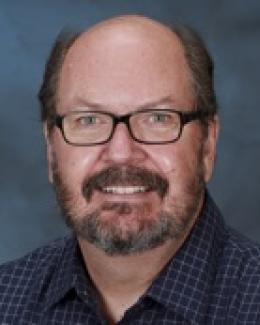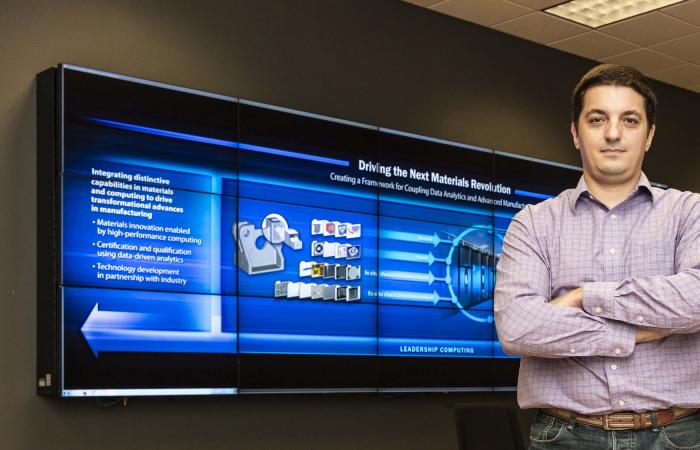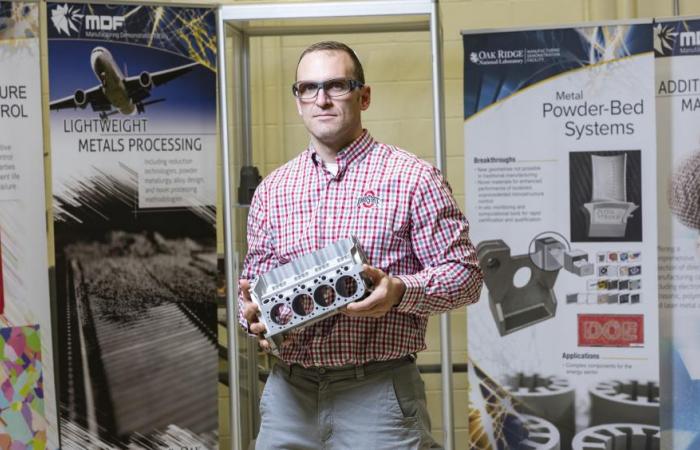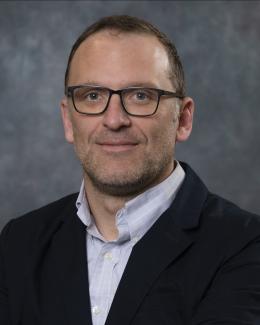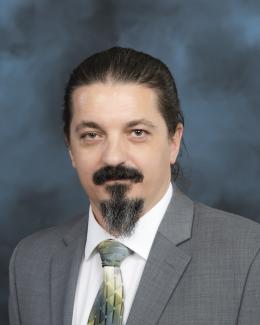ORNL advances additive manufacturing
On the surface, additively manufactured parts may seem like just a series of really small welds, but the minute details of exactly how you print a component play a significant role in its performance.
The approach is substantially different from that of traditional manufacturing, where the links between processing and properties are well understood, and the goal is to produce materials that have a uniform, or equiaxed, structure.
“We often cast and then forge the material to produce an equiaxed grain structure so that it has uniform material proper- ties in all directions,” ORNL Deposition Science and Technology Group Leader Ryan Dehoff said of the traditional process. “The challenge is getting the nal geometry from the material.
“Additive manufacturing is just the opposite; we can now accomplish complex geometries. The challenge is understanding how the complex thermal cycles affect the mechanical properties of the material.”
Much of the difference between the two approaches lies in the crystalline structure of a metal. In many traditional manufacturing processes, crystals are randomly oriented, making the bulk material equally strong in every direction. If, however, the crystals are aligned, that material becomes extra strong in one direction at the expense of strength in others. The extreme case is referred to as a single crystal, where there’s only one crystallographic orientation.
Researchers at ORNL have figured out how to control the material’s crystal structure at a very local level by incorporating advanced materials theory into the additive manufacturing process. Such an ability is unprecedented.
“Now we can control the material response to a degree that was never possible before,” Dehoff explained. “The first time I openly disclosed this new capability, we were with a Fortune 100 company, and the chief technology officer said, ‘I’ve spent 30 years of my career trying to accomplish site-specific microstructure control, and you have proved the holy grail of metallurgy is now possible.’”
The work highlights the benefits of collaboration between specialties across the lab.
At the core is supercomputing.
Significant advances were made when Naren Raghavan, a student with the University of Tennessee’s Bredesen Center for Interdisciplinary Research and Graduate Education at ORNL and part of the manufacturing team, worked with computational scientist John Turner and colleagues. The result was a high-performance computational platform that allowed researchers to understand the fundamentals of the process and apply them to more complex parts, controlling local properties and performance.
“We no longer can think only about traditional approaches and scan strategies for making additively manufactured components,” said Turner, who is principal investigator of ExaAM, the Transforming Additive Manufacturing through Exascale Simulation project. ExaAM is a multilaboratory program led by ORNL focused on linking physical phenomena across widely varying lengths to create predictive models.
“The research at the Manufacturing Demonstration Facility over the past couple of years has shown how complex additive manufacturing processes can be,” Turner said. “The ability to change the scan paths, or even use spots rather than lines to control the microstructure, yields almost unlimited possibilities. The power to simulate the result and optimize the outcome will be critical for the success of additive manufacturing technologies.”
To take advantage of these computational tools, researchers must incorporate every step in the process, from the intent of a designer to inspection of the finished part.
“We are developing a framework to overlay multiple data modalities from additive manufacturing technologies, including the build intent, the outcome from predictive modeling, in situ process monitoring data, and post-build inspection information,” said ORNL imaging scientist Vincent Paquit. “We can then perform data analytics, machine learning and artificial intelligence to understand the intricacies of the process. This can only happen if we use a supercomputer, as many of the individual data sets are on the order of tens of terabytes.
Turner agreed, noting that researchers must learn much more about the science of solidification and the way microstructures grow within a material. A substantial reason he is leading the project is to prepare these questions for future exascale computers that will be able to tackle a billion billion calculations each second.
“At this point there’s a significant amount of trial and error, which wastes time and energy,” he said. “Ultimately we’d like to be able to describe a part and prescribe the process parameters that would give us the strength and performance properties we want and then go build it—in one try. That’s the goal.”
As they develop the techniques that will allow them to customize grain patterns, researchers need to evaluate their progress. That’s where neutrons come in, specifically ORNL’s two neutron science facilities—the Spallation Neutron Source and the High Flux Isotope Reactor.
Not only does the penetrating power of neutrons allow researchers to see deeply within a metal component, but neutrons also reveal the grain patterns that affect a part’s strength. This information can be extracted in a fraction of the time required by conventional metallography.
“Neutrons can penetrate a material easily; you don’t have to slice or cut it,” noted ORNL neutron scientist Ke An. “Neutron diffraction is a powerful way to see polycrystalline structures, giving us information on crystal orientation.”
